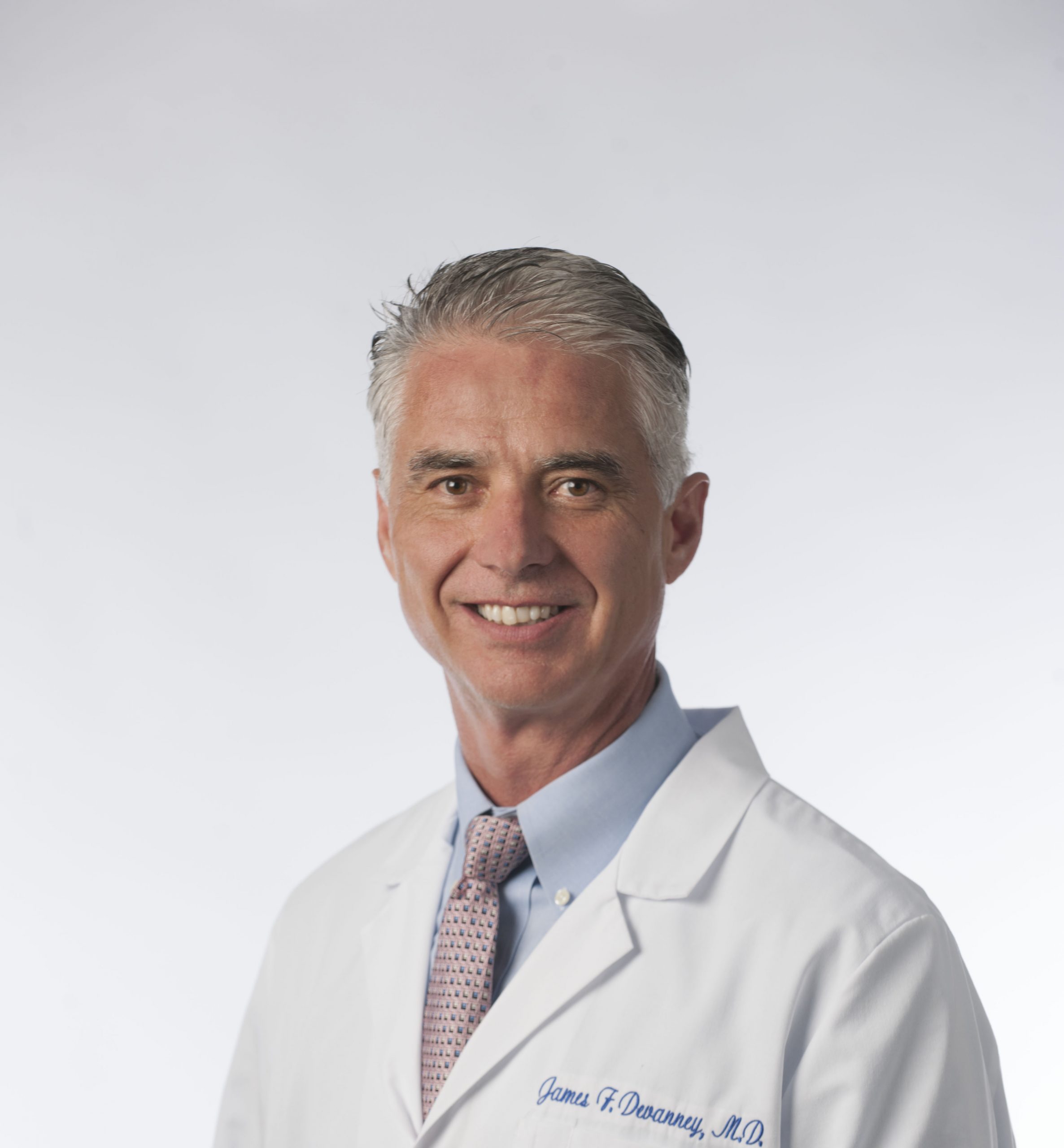For years, Warren Rabeck’s sleep was interrupted by a constant need to urinate. The Torrington retiree suffered from a common urologic condition known as benign prostatic hyperplasia (BPH), in which an enlarged prostate impedes the flow of urine from the bladder, and took medication to ensure his urethra, the duct through which urine leaves the body, did not become blocked. But another consequence of BPH is bladder retention and a feeling of urgency; indeed, Rabeck says he felt the need to urinate every two hours.
“I never really got a good night’s sleep,” he says.
Last December, Rabeck’s doctor, Charlotte Hungerford Hospital urologist Dr. James Devanney, told him about a relatively new, minimally invasive surgical procedure called UroLift that would relieve his symptoms and allow him to stop medications. This simple procedure changed Rabeck’s life.
“I would have had to stay on those medications indefinitely – basically, forever,” says Rabeck. He credits UroLift and Dr. Devanney for making his life “a whole lot easier.” Not to mention more restful.
Dr. Devanney was introduced to UroLift – the latest tool in his arsenal against BPH – at a urology conference about five years ago, and he quickly incorporated the procedure into his practice. In fact, he has done more UroLift procedures than any other doctor in the state.
This fall, he will be awarded the designation “Center of Excellence” – reserved for physicians who have a high level of training and experience with UroLift – from NeoTract Inc., the implant’s manufacturer. Dr. Devanney will be the first physician to receive this award in Connecticut, New York, New Jersey or Massachusetts.
UroLift, he notes, is “a definite improvement in management of this problem.” Up until now, he says, patients had a choice between taking medicine or opting for surgery, which carries the risk of complications and requires days in the hospital. “This procedure, which basically involves just tacking back the prostate tissue to keep the urethra open, takes me less than five minutes.”
A NEW SOLUTION TO A COMMON PROBLEM
According to Dr. Devanney, most men develop BPH, benign overgrowth of the prostatic tissue, as they age.
“Men over 50 have a 50 percent chance of developing BPH,” says Dr. Devanney. “Men over 80 have a 90 percent chance.” In fact, BPH is the most common problem he treats in his practice.
Simply put, men’s prostates get larger as they age. In some cases, men with enlarged prostates have no symptoms and require no treatment. But in others, the urethra can become constricted or obstructed, leading to urinary symptoms such as a weak or interrupted flow, bladder urgency and urinary frequency.
Typically, urologists would first treat with medical therapy, namely pills, that either relax the muscles in the prostate to open up the narrowed channel through which urine flows, or shrink the prostate to similar effect.
The problem with medical therapies, says Dr. Devanney, is that they have potential side effects, like a drop in blood pressure and dizziness with the muscle-relaxing products, and loss of libido or erectile dysfunction with the shrinking medication.
“Patients would also have to take the medicine forever. It doesn’t stop the underlying pathology,” he adds.
In addition, despite being on pills, as men get older, the bladder muscle becomes weaker, so the medicines can stop working.
At that point, the urologist would usually turn to surgery. Historically, the gold standard in surgery was TURP (transurethral resection of the prostate), a procedure Dr. Devanney says many patients referred to as the “Roto-Rooter.”
He explains: “You’d remove excess tissue to create an opening – you’d bulldoze out the problem.” The downside: a patient could be in the hospital for days, and was at risk for complications like bleeding, infection, nerve damage and erectile dysfunction.
More recently, laser surgery offered a less intrusive and more precise way to open up the clogged urethra. Though this had a reduced risk of sexual side effects, patients still required catheters post surgery and were susceptible to bleeding and potential damage to nerves.
“This was still ablative,” says Dr. Devanney. “You were just burning the tissue instead of cutting it.”
UroLift, on the other hand, is simply an implant – four to six clips that resemble staples and basically tack the prostate open. “With UroLift, you are unloading the restriction imposed by the growth of the excess tissue, but you are not cutting any nerves,” he explains. Though patients may still have a few days of bleeding and discomfort following the procedure, it is relatively painless, and 90 percent effective in improving symptoms, Dr. Devanney says.
Moreover, there are no associated sexual side effects commonly experienced in more invasive procedures, and it can be done as an outpatient without the use of a catheter.
LITHOTRIPSY: “STAR WARS” TECHNOLOGY
UroLift is not the only advance in urology, according to Dr. Devanney.
Another “awesome technology” he says, is ultrasound-guided lithotripsy, a newer, more targeted version of a long-standing urologic tool that basically pulverizes kidney stones using sound waves. With ultrasound guidance, he says, urologists can more accurately target the stones to get “better fragmentation and better outcomes.”
“I always say it’s like ‘Star Wars,’ the concept that someone can send sound through the body and convert stones to powder. That’s pretty cool.”
Dr. Devanney says the technology involved in urology – the first field to employ the use of scopes and laparoscopy – is one of the things that drew him to the specialty.
“I love my job,” he says. “I love the diversity that urology offers, and the fact that it combines surgery, office-based work and technology.”
PROSTATE CANCER, LOW T: TO SCREEN OR NOT TO SCREEN?
Other common urologic conditions that Dr. Devanney treats include prostate cancer, erectile dysfunction, urinary incontinence, and low testosterone levels (or “low-T”).
Like BPH, prostate cancer is a disease associated with aging. About 70 percent of men 70 or older and 80 percent of men who are 80 and older have prostate cancer, though Dr. Devanney points out that “most have no knowledge of it; many die with it, but not of it.”
Urologists can screen for prostate cancer with the PSA (prostate-specific antigen) test, which detects the presence of these antigens, or proteins, that are produced by prostate malignancies. But the PSA test can produce many false positives, so indiscriminate screening for prostate cancer is controversial.
“Factors that need to be weighed before screening include family history, age, and overall health,” Dr. Devanney says. Prostate cancer is the second most common cause of cancer-related deaths among American men, but when found early, has a 90 percent cure rate. “I approach men who are 50 to 75 with a greater than 10-year expected life span to consider screening. I’d rather have more information than less.”
Dr. Devanney also is an advocate of testosterone screening in men 50 and older who have symptoms like fatigue, loss of muscle mass and problems with increased body fat, particularly in the mid section. Testosterone levels tend to decline with age. Not only can low-T cause muscle wasting and fatigue, Dr. Devanney says, but it can also cause depression, sexual problems, Type II diabetes, and reduced energy.
“The vast majority of literature shows that testosterone deficiency is, in fact, a risk factor for atherosclerosis, which is a vascular disease that can result in heart attack, strokes, and erectile dysfunction. Low-T is as much a risk factor for vascular disease as smoking, but people don’t know that.”
On the other hand, he says, if you boost their testosterone levels, patients lose weight, their insulin regulates, they put on muscle mass, improve their sexual function and experience fewer depressive symptoms, he adds.
CHH: COMING HOME
For Dr. Devanney, who was born in Hartford and raised in Winchester, joining the staff of CHH 23 years ago was like coming home. Having stayed in state for college and medical school (Trinity College and UConn School of Medicine, respectively), he completed his urology residency at the University of Virginia before returning to take his first job at CHH.
“It’s been interesting to see patients now that I knew as a young man growing up,” he says.
A horseback riding and fox hunting enthusiast, Dr. Devanney has two sons and a daughter, ranging in age from 13 to 26. His eldest son, currently in his last year in medical school, is apparently following in his father’s footsteps.
Though Dr. Devanney taught medical students while a resident at UConn, CHH is not a teaching hospital, so training young doctors is no longer a part of his job. But he says he teaches his patients every day.
The word doctor derives from the Latin word docere, meaning “to teach,” he explains. “When I see a patient, my job as their doctor is to teach them about their condition.”
Lori Miller Kase is a freelance writer living in Simsbury.
Photo courtesy of Charlotte Hungerford Hospital








More Stories
Jamie Shawver, D.O.: The Modern-Day Family Doctor
Leading in Urologic Oncology: Ryan Dorin, M.D., Works on Expanding Patient Care
UConn Health Stands at the Forefront of Comprehensive Sickle Cell Treatment in the U.S.